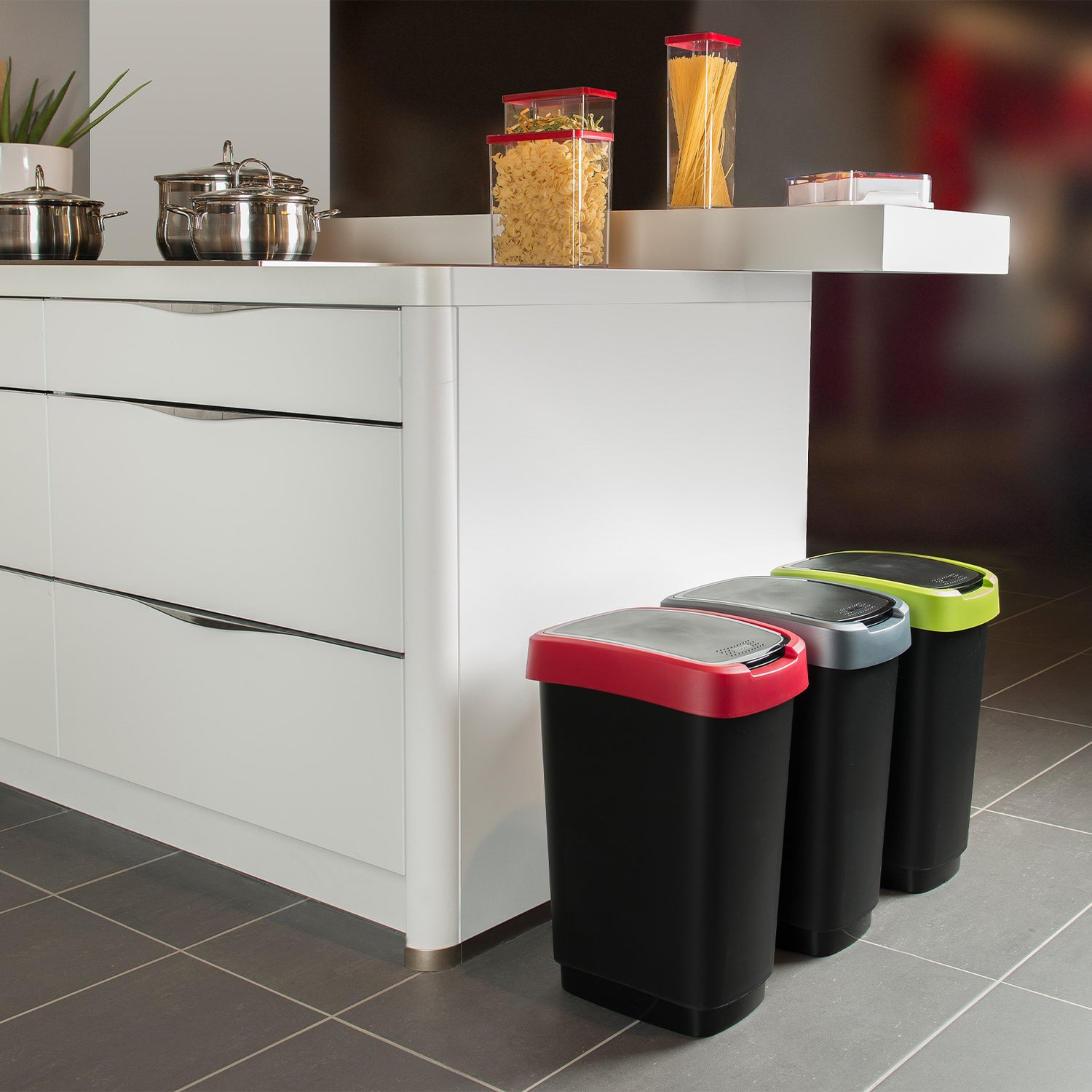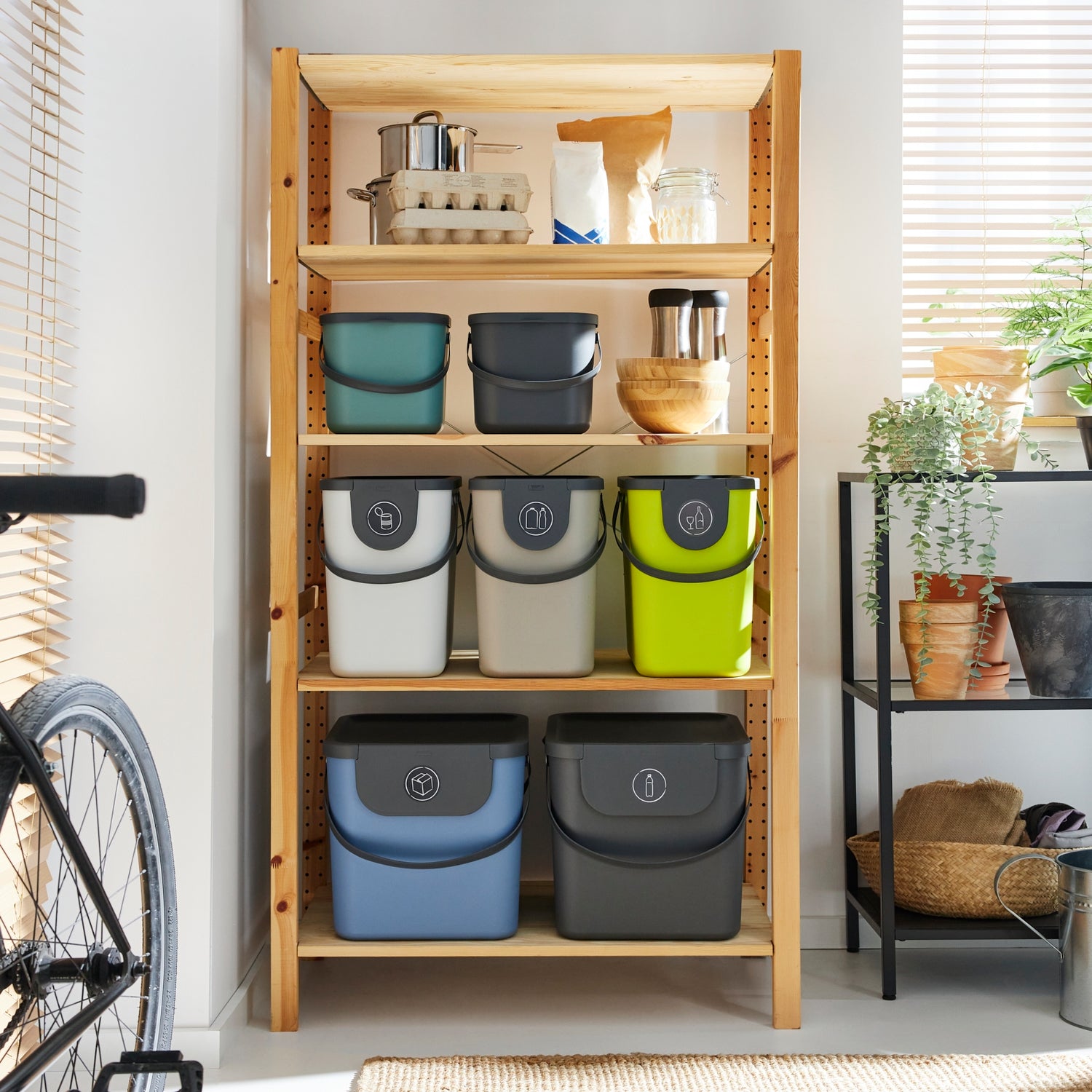What is recycling, what does it involve, what are its types and stages?
What is waste recycling?
Recycling is not just a trendy word, it is a philosophy of life. It is the way we give a second life to used items and materials that would otherwise end up in a landfill. Recycling is a process that allows for rebuilding and reusing, which is a key step in achieving a sustainable lifestyle.
What is the purpose of recycling?
The main goal of recycling is to reduce the amount of waste that ends up in landfills. Through recycling, we can decrease the amount of waste and lower the negative impact on our planet. We respect natural resources, protect the environment, and care for better air, water, and soil quality. We strive to make our environment more beautiful and sustainable for us and future generations.
Effective waste segregation, or what is subject to recycling?
Everything starts with effective waste segregation. This is a key step that allows for the efficient processing of raw materials. The basic division is the distinction between biodegradable and non-biodegradable waste. Biodegradable waste consists of organic substances that can undergo natural disposal through the decomposition process. Disposing of them in a landfill is a wasted opportunity for organic recycling, also known as composting. On the other hand, non-biodegradable waste, such as plastic, glass, or metal, is subject to material recycling.
What is the difference between recycling and recovery?
Although the words "recycling" and "recovery" are often used interchangeably, there is a subtle difference between them. Recycling refers to the process in which used materials are processed to transform them into new products. It's like magic that turns seemingly useless things into valuable resources. On the other hand, recovery is a more general term that encompasses both recycling and other waste processing methods that focus on recovering energy or materials from waste.
What waste is not suitable for recycling?
Unfortunately, not all waste is suitable for recycling. Certain items or substances are too complicated to be effectively recycled. An example is highly contaminated packaging from chemical products, which can contaminate an entire batch of recycling. Often, there is also a lack of appropriate technology that would allow for the processing of a given type of waste. That is why it is so important for us to be aware of what we should avoid putting in the recycling bin. Proper sorting is the key to the success of the entire endeavor.
- Highly contaminated packaging: Waste that is heavily contaminated with chemicals or other harmful substances is not suitable for recycling. Disposing of it in the recycling bin can effectively contaminate the entire batch of recyclable materials.
- Disposable products: Many disposable products, such as disposable cups and plates, plastic cutlery, or straws, are not suitable for recycling. These items are made from various materials that are often difficult to separate and process.
- Products made from plastics marked with the number 6 (PS): Plastics marked with the number 6, such as polystyrene, are usually difficult to recycle and are rarely accepted in recycling programs.
- Glass bulbs and batteries: Waste such as glass bulbs and batteries contain toxic substances and should not be thrown into the recycling bin to avoid pollution and harm to the environment.
- Packaging from oils and chemicals: Packaging from oils and chemicals may remain contaminated and pose a threat to the recycling process. Instead, they should be properly disposed of at special collection points.
- Wet waste and food scraps: Organic waste, such as wet food scraps, damp paper towels, and napkins, should not be thrown into the recycling bin, as they can cause mold and unpleasant odors.
- Multimaterial items: Items made from a combination of different materials, such as cardboard with metal elements, are difficult to separate and recycle.
- Discolored and dirty plastics: Plastics that have become discolored or are heavily soiled can be difficult to process and are not suitable for recycling.
In summary, when heading to the recycling bin, let's remember that not everything that seems recyclable is actually suitable for that process. It is important that we properly sort our waste and choose those that are accepted in our local recycling program. This way, we can collectively take care of our planet and reduce the amount of waste that ends up in landfills.
Does waste segregation make sense?
The answer is: Yes, absolutely! Waste segregation is key to the success of recycling. It is we, as consumers, who have a huge impact on the recycling process. By ensuring that we properly segregate waste, we enable more effective processing and transformation of raw materials. A stylish waste bin for segregation is just the beginning of the journey. It's like a puzzle where all the pieces must fit together. This way, we can reduce the amount of waste that ends up in landfills and lessen the negative impact on the environment.
Recycling stages
- Collection and segregation: Recycling starts at homes and businesses, where we must properly sort waste. This is the first and key step that affects the efficiency of the entire process.
- Transport: Sorted waste is transported to processing plants, where it is properly prepared for further processing.
- Processing: This is where biodegradable waste undergoes organic recycling, that is, composting. Non-biodegradable waste is processed in various ways, depending on the material.
- Reprocessing: Non-biodegradable waste is treated to become raw material for the production of new products.
It is worth remembering that there are different types of recycling and the individual stages may vary from each other.
Organic recycling called composting
In light of the growing ecological awareness, more and more people realize the key importance of waste recycling. One of the most interesting and environmentally friendly recycling processes is organic recycling, also known as composting. It is a fascinating art of transforming biodegradable waste, such as food scraps, pieces of fruits and vegetables, or leaves, into a valuable treasure for our planet. Particularly in households, organic recycling has enormous potential in reducing waste and supporting the natural disposal of biodegradable waste.
Let us begin our adventure with organic recycling in our own homes, which are essentially a source of a significant amount of biodegradable waste. Every day, while preparing meals and maintaining our gardens, we generate food scraps, mowed grass, cut flowers, and leaves that often end up in the trash. However, what seems to be worthless waste can actually become a valuable component of compost - a natural fertilizer that improves soil quality and supports plant growth.
The composting process involves the natural disposal of biodegradable waste, which means that these materials undergo spontaneous decomposition under natural conditions. When we leave biodegradable waste in landfills, it accumulates there in anaerobic conditions, causing the emission of methane - a potent greenhouse gas. However, when we use a composter, the waste processing process looks completely different.
In households, composting can be an easy and eco-friendly solution. To start your composting adventure, all you need is to get a suitable composter or designate a spot for composting in your yard. You can throw chopped food scraps, crushed mowed grass, paper scraps, and even wilted flowers into the composter. It is important to avoid putting meat, dairy, oils, or plastics into the composter, as they will not decompose and can cause unpleasant odors and unwanted microorganisms.
Products that are created through recycling
Recycling is nothing more than the creative art of transformation. Thanks to it, many products that we know in our daily lives are created. It only takes a little imagination to turn waste into something completely new. Here are a few examples:
- Fleece jackets and shirts made from PET yarn are created from plastic bottles.
- Eco-friendly paper bags are made from old newspapers and waste paper.
- New cans as well as building materials are produced from used aluminum cans.
- New bottles, glasses, and decorations are made from glass bottles.
Rotho brand: Innovative approach to the use of recycled materials
In the face of growing ecological awareness and the need to reduce waste, many companies have begun to focus on sustainable practices, including the use of recycled materials. One such company is the Rotho brand, which has gained recognition for its innovative and ecological philosophy of operation.
The Rotho brand, known for producing exceptional solutions for home and space organization, has been directing its efforts towards sustainable development for years. Concerned about the natural environment, the Rotho brand has set itself an ambitious goal: to use recycled materials in the production of its products. This long-term commitment to pro-ecological activities makes Rotho a leader in the industry, inspiring many other companies to take similar steps.
How does the Rotho brand use recycled materials?- Recycling of plastics: The Rotho brand makes every effort to ensure that as many of its products as possible are made from recycled plastics. Plastic containers, storage boxes, and even various types of accessories and organizers are produced from recycled materials. This is a significant step towards waste reduction and sustainable use of resources.
- Collaboration with local recycling programs: Rotho actively collaborates with local recycling programs that provide materials from sorted waste. This allows the brand to use raw materials that have been properly processed and meet high quality standards.
- Innovative processing technologies: Rotho invests in modern processing technologies that allow for the transformation of waste into high-quality raw materials for the production of its products. This enables optimal use of recycled materials.
- Environmental awareness of customers: The Rotho brand actively engages its customers in pro-ecological activities. It encourages proper waste sorting and choosing products made from recycled materials. Through education and awareness, Rotho builds customer loyalty around the idea of sustainable development.
- Eco-packaging: Rotho also ensures that the packaging in which its products are delivered is eco-friendly. It uses materials that are recycled or recyclable, minimizing the amount of waste generated in the packaging and transportation process.
- Innovative design: The Rotho brand proves that recycling can go hand in hand with innovative design. Its products are not only functional and eco-friendly but also aesthetically designed, attracting customers and encouraging them to choose more sustainable solutions.
In summary, the Rotho brand is an excellent example of a company that actively uses recycled materials in the production of its products. Through an innovative approach to the use of raw materials and the ecological awareness of customers, Rotho meets the expectations of increasingly environmentally conscious consumers. Its commitment to environmental protection makes it an inspiration for other companies and proof that pro-ecological actions go hand in hand with business success.
- Recycling of plastics: The Rotho brand makes every effort to ensure that as many of its products as possible are made from recycled plastics. Plastic containers, storage boxes, and even various types of accessories and organizers are produced from recycled materials. This is a significant step towards waste reduction and sustainable use of resources.
- Collaboration with local recycling programs: Rotho actively collaborates with local recycling programs that provide materials from sorted waste. This allows the brand to use raw materials that have been properly processed and meet high quality standards.
- Innovative processing technologies: Rotho invests in modern processing technologies that allow for the transformation of waste into high-quality raw materials for the production of its products. This enables optimal use of recycled materials.
- Environmental awareness of customers: The Rotho brand actively engages its customers in pro-ecological activities. It encourages proper waste sorting and choosing products made from recycled materials. Through education and awareness, Rotho builds customer loyalty around the idea of sustainable development.
- Eco-packaging: Rotho also ensures that the packaging in which its products are delivered is eco-friendly. It uses materials that are recycled or recyclable, minimizing the amount of waste generated in the packaging and transportation process.
- Innovative design: The Rotho brand proves that recycling can go hand in hand with innovative design. Its products are not only functional and eco-friendly but also aesthetically designed, attracting customers and encouraging them to choose more sustainable solutions.
In summary, the Rotho brand is an excellent example of a company that actively uses recycled materials in the production of its products. Through an innovative approach to the use of raw materials and the ecological awareness of customers, Rotho meets the expectations of increasingly environmentally conscious consumers. Its commitment to environmental protection makes it an inspiration for other companies and proof that pro-ecological actions go hand in hand with business success.
Energy recycling
Energy recycling is a process in which waste that is not suitable for traditional material or organic recycling is subjected to special technologies to recover energy. This innovative approach allows for the utilization of the potential contained in waste by burning it in appropriate facilities. Thanks to this process, it is possible to reuse the energy contained in waste for the production of heat and electricity, which contributes to reducing the negative impact on the environment and increasing the efficiency of waste management.
It is important that the incineration of waste for energy recovery concerns only garbage that is not suitable for reuse, recycling, and no longer represents any utility value.
FAQ – Frequently Asked Questions and Answers
Does recycling really have an impact on environmental protection?Yes, every small gesture towards recycling has a huge impact on protecting our environment. Through recycling, we reduce greenhouse gas emissions and save natural resources.
Can everything be recycled?Unfortunately, not all waste is suitable for recycling. For example, aluminum foil or highly contaminated packaging can be problematic in the recycling process.
Yes, every small gesture towards recycling has a huge impact on protecting our environment. Through recycling, we reduce greenhouse gas emissions and save natural resources.
Unfortunately, not all waste is suitable for recycling. For example, aluminum foil or highly contaminated packaging can be problematic in the recycling process.
Is it worth recycling if I am just one person?Absolutely! Every person has an impact on the amount of waste that ends up in landfills. Thanks to your involvement, we reduce pollution and protect the environment.
Absolutely! Every person has an impact on the amount of waste that ends up in landfills. Thanks to your involvement, we reduce pollution and protect the environment.
Summary
Recycling waste is the path we have chosen to take care of our planet. It is active participation in a process that allows us to give waste a second life. Effective sorting is the key to the success of the entire undertaking. Organic recycling ensures that organic matter can continue to serve us as valuable fertilizer. The difference between recycling and recovery is subtle, but both methods aim to reduce the amount of waste. And let us remember that every small gesture, every personal commitment contributes to environmental protection and the creation of a better, more sustainable world for us and future generations.





